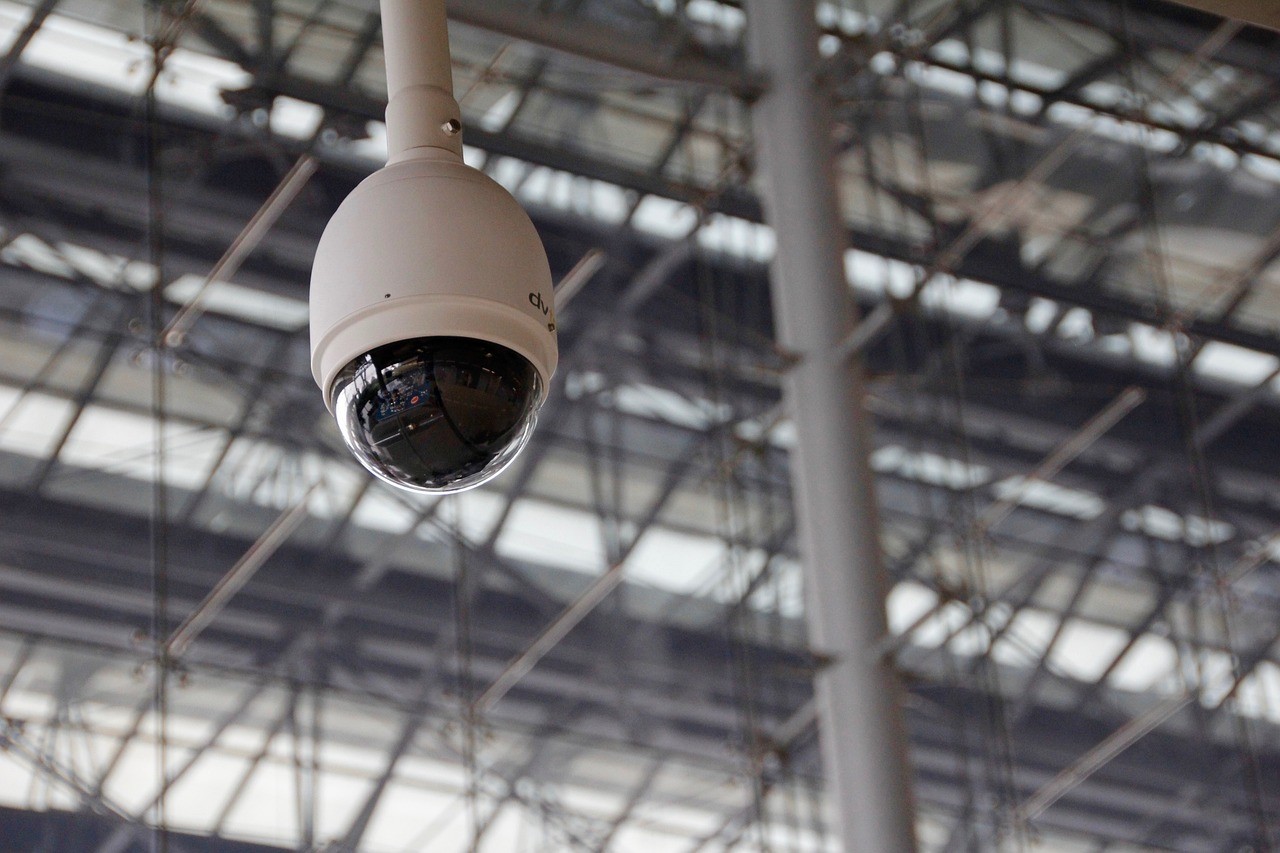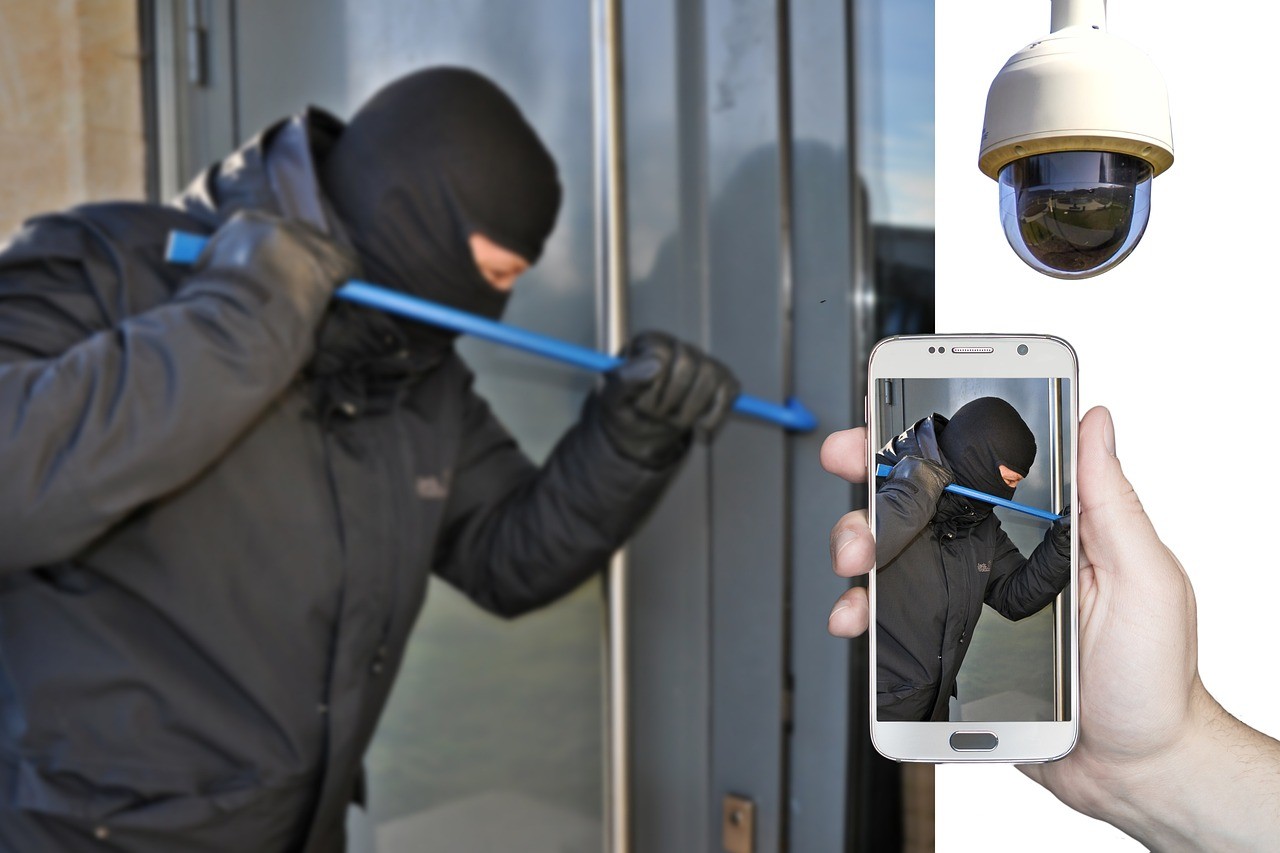In a word, yes. In the United States alone, it is estimated that every 13 seconds someone’s home is broken into. That ends up being around 6,000 homes a day. Unfortunately, people fall into a false sense of security feeling that since they live in a safe neighborhood, they do not need a home security camera.
It is the sense of security that criminals rely on. According to the FBI, one-third of all homes that do not have a security system, which in most cases includes outdoor security cameras, fall victim to burglary. On the other side of the coin, only one out of every 250 homes that do have a security system is broken into.
Security When Traveling
Most people have jobs that require them to spend some time away from home or even to travel to another place.
When you purchase the home security cameras available, you will likely end up with cameras that have a surveillance system that allows you to monitor your home no matter where you are.
Some security systems even allow you to listen to what is going on in your home and to speak to your family via the camera’s audio system.
Peace of Mind
When you use the outdoor security cameras for your home’s environment, you have the peace of mind that comes from knowing that you and your family are secure whether you are there physically or whether you are away. Most people would agree that this peace of mind is worth more than anything they would pay for a security camera system.
Types of Security Cameras
Although security cameras may seem complicated, it’s easy to understand them if you break them down into two categories. There are indoor cameras and outdoor cameras.
Outdoor Security Cameras
The outdoor security camera will be designed to protect against the weather as well as tampering. Since outdoor security cameras have to withstand so much, they are made from extremely durable materials and may be placed inside very heavy-duty housing to discourage someone from tampering with them.
Indoor Security Cameras
When you purchase an indoor security camera, you’re looking for something that is going to be small, lightweight, and aesthetically pleasing.
Both outdoor and indoor cameras are going to have infrared features and the ability to transition easily from a dark room to a bright room.
Both outdoor and indoor cameras should be able to provide you with a crisp picture even when there are drastic changes in color in the area they are recording.
Fake Cameras
One of the unique security features is fake security cameras. Those dummy cameras are pretty cheap and can scare potential burglars. But experienced professional burglars will easily determine if your house isn’t really under surveillance.
Security Cameras Features to Consider
As you have seen in our review, not all cameras are created equal. There are a few factors that you should take into consideration when trying to determine what the home security camera is for your needs. They include the following:
Price
You could find the nicest camera in the world, but if it costs more money than you can afford, then there’s no point in getting it. So before looking at reviews, it is good to clearly understand how much are security cameras and make sure you have the budget for them.
Resolution
Resolution is a term that you are going to hear over and over again in outdoor wireless camera security reviews. This term tells you how clear the image from your camera is going to be. The clearer the image is, the easier it will be for you to identify what is being captured by the camera.
Sound
Having sound with security cameras was considered a novelty a few years ago, but now it is a must. Most security camera systems not only allow you to hear what is going on in the area that is being monitored, but it allows you to speak using the intercom.
Movement
Having a home security camera that can tilt and pan will allow you to record a larger area than a camera that is static. It can also be cost-effective as it minimizes the number of cameras you will need.
Night Vision
Most home security camera reviews will highlight the night vision capabilities of their cameras. The farther away your camera can see at night, the more secure your property will be and the less space criminals have to engage in their nefarious activities.
Field Of View
This is another feature that is going to impact the area that your camera will be able to record. The wider the field of view, the fewer cameras you will need and the more area you have that will be covered.
Wi-Fi Capability
As the Internet of Things becomes more and more popular, the need for devices to have Wi-Fi capability increases. Cameras that can communicate via Wi-Fi will allow you to monitor your home no matter where you are, adjust your cameras, and communicate with your family members as well as listen to what they have going on.
Motion Detection
Cameras that have motion detection will be able to alert you when something passes in front of its field of view. Many people set the motion detection feature to activate during times when any movement in front of their home or office would be considered suspicious.
Power Source
For the power source, you can either have it wired or wireless. What’s better is more based on personal preference. Wired has the option of consistent power, but you must keep in mind your home’s outlets when you install the camera.
A wireless power source is backed by batteries or solar panels. This does give you greater control over where you set it up, but you also have to keep in mind that you must replace or recharge the batteries in the device. Some can last for years, while others only manage for a couple of months.
App Interface
Home security cameras offer tremendous peace of mind, but with a proper app interface, you can rest even easier knowing you can watch your home even if you aren’t home.
The majority of smart security cameras feature a free app interface. This allows you to monitor recordings, live stream, or perhaps speak to visitors if the camera has a 2-way audio function.
Consider apps that are intuitive and reliable so you don’t have to struggle to check in with the camera.
Storage
Some cameras offer local DVR & NVR storage so you can freely record and save what you wish. Others provide backup to a cloud server for a more permanent and safe solution that doesn’t risk someone stealing an SD card.
Not all cloud storage is free, however, so check with your security camera to see if they offer a trial or if you’re willing to pay the subscription fee.
What Is Z Wave Technology?
Z Wave technology is efficient and low energy. It is at the heart of communication between smart devices.
It is mostly used in connection with home automation and is based on RF signals.
When Z Wave technology is used in a home, your electronic devices begin to communicate with each other by exchanging signals and messages.
They then use this information to perform whatever function they want. In the case of a Z Wave video camera, the product will monitor your home, activate when there is motion, record when you want it to, and move to capture the information you want it to.
Many different styles of security cameras will work with Z Wave technology. The key is finding the right camera for your needs and then integrating it into your home security system.
Tips for Placing Security Cameras
You could have the nicest home security camera in the world, but if it is not properly placed, it will not provide you with the security you need. The following are a few tips for placing and maintaining security cameras.
There are a few common places where people put cameras and for good reason. Some of these places include:
The Front and the Back Door
The front door is one of the most common places for people to put a security camera. Unfortunately, many people neglect to put outdoor security cameras by their back doors. Most criminals are going to opt to come in through the back door because it is often more secluded and provides ease of access.
Areas of High-Foot Traffic
When determining where you’re going to place your security camera, ask yourself, where would a criminal need to walk if they were going to steal my belongings? Those high-foot traffic areas, such as hallways and living rooms, should have security cameras.
Make Sure Your Camera Is Pointing the Right Way
Part of this has to do with understanding how your cameras and your camera’s motion detectors work. Most motion detectors work best when people walk by them, not directly toward them. That is why pointing a camera in the right direction and placing it in a location that people walk by, such as hallways, is a good idea.
Keep Your Bedrooms Safe
One of the first places a burglar is going to go is your master bedroom. They know that most people store their valuables there. Also, putting a camera in your child’s bedroom or in your child’s playroom gives you the ability to monitor them while you are cooking, at work, or even watching television in another room.
Cover Blind Spots
Any guide on how to install security cameras outdoors is going to encourage you to look for hidden areas that criminals might take advantage of. These would include blind spots, such as a side gate, your backyard, or even off-street windows.
How to Maintain Your Security Cameras
Your security camera is a financial investment and an investment in your family’s safety. You should be keenly interested in doing whatever you can to keep your outdoor security cameras as well as your indoor security cameras well-maintained and working at 100 percent.
Inspect Cameras Twice a Year
A careful inspection of your cameras twice a year may reveal signs of corrosion. Replace any corroded connectors as well as make sure that snowstorms or spring rains have not caused the power loss. These inspections would be a good time to check for signs of tampering.
Take the time to clean your camera lenses, removing any dust or water spots. A dirty lens can render your camera virtually worthless. Just a small smudge could distort the image to the point where people or objects become unidentifiable.
Loose cameras or cameras that are subject to vibration can quickly become ineffective.
Even the best outdoor security camera can be rendered inert if wind, jiggling, or vibration causes it to move out of place or affects the quality of the image.
Replace Broken Cameras
If your camera has a broken part, replace it. When buying new parts, it is recommended that you buy them from the same manufacturer who sold you the camera in the first place. This way, you can guarantee that the system will continue to function flawlessly.
Broken cameras are often the result of landscaping issues or tampering with animals, such as birds, squirrels, or bees. So during your biannual check, go through and trim back any shrubbery that is interfering with your camera and remove any nests or hives around your camera.
The environment can also take a toll on your camera. You want to make sure that your housings and enclosures are waterproof.
Check for signs of condensation and dirt. If it appears that your cameras are overexposed to the elements, make any necessary adjustments either in their location or in the housing that secures them.
Finally, keep the instruction manuals. The instruction manuals are full of troubleshooting suggestions as well as maintenance suggestions that can save you time and money, helping you to get the most out of your security cameras.



